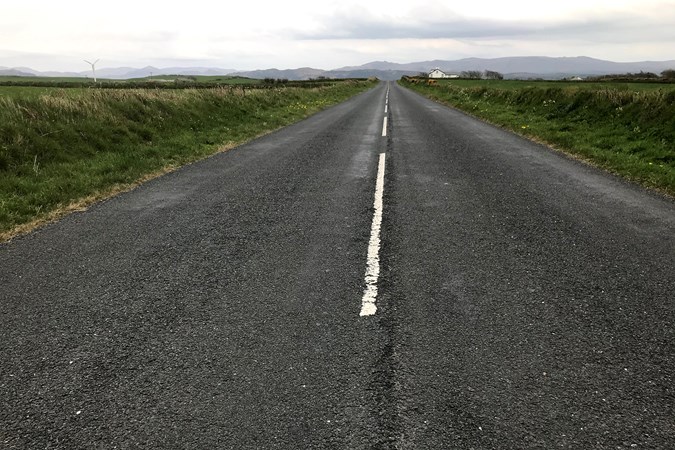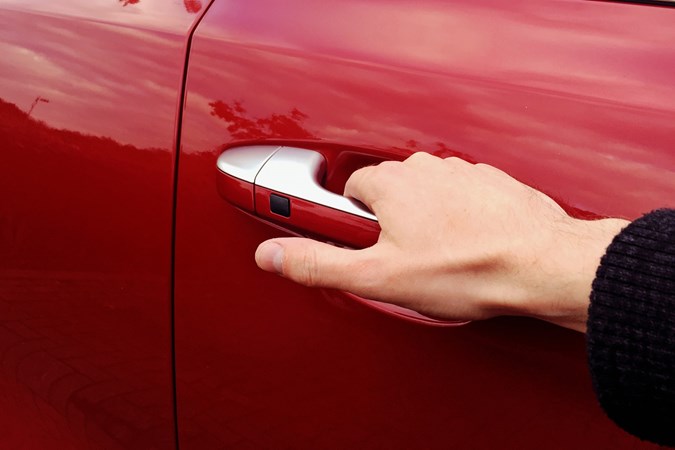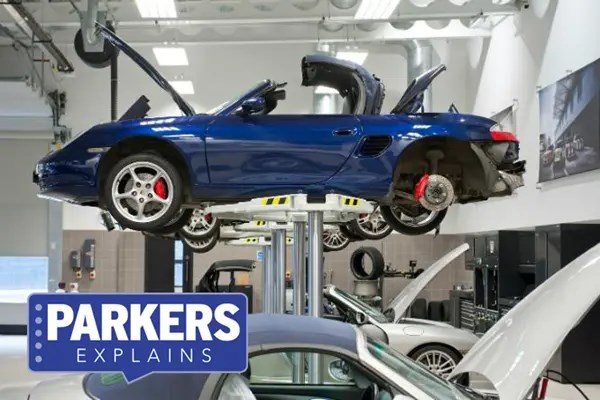
The Prime Minister Boris Johnson has announced tough new Tier 5 lockdown restrictions across England, bringing it inline with Scotland, Northern Ireland and Wales.
Although the message is to stay at home wherever possible, driving is still permitted in certain circumstances, so it’s well to be on top of what you can and can’t do under the current set of Coronavirus (COVID-19) guidelines.
All non-essential businesses have closed, and people should only leave their homes if they need to work, shop for essentials or exercise. These measures have been introduced to slow down the transmission of Coronavirus (COVID-19). All areas are now described as ‘National Lockdown: Stay at Home’.
Outdoor exercise is now restricted to once a day and with one other person or someone in your support bubble, so you can’t meet other people, and can’t travel outside of your area. But the main question for you is whether you really want to be out and about that much during a pandemic?
It’s advised that you should limit driving to the following purposes:
>> Buying food
>> Attending a medical appointment
>> Taking goods to a vulnerable or self-isolating person
>> Commuting – if you’re unable to work from home
>> Travelling to escape domestic violence
The best advice we can give is to stay at home as much as possible regardless of where you are, and don’t drive unless absolutely necessary. It has been proven that taking these measures will slow the spread Coronavirus (COVID-19) – in doing so, the chances of these restrictions ending sooner are increased.
Read on to find out all you need to know about driving right now.
>> What to do if your car runs out of MoT?
>> Is your warranty still valid if you’re late for a service?
>> Keeping your car clean and yourself safe
>> When to travel and how to stay safe
>> What if my car breaks down during a journey?
>> Car sharing: who can I give lifts to?
>> What’s happening to fuel prices?
>> Can you declare a car off-road and not pay road tax?
>> What to do if you can’t make your finance payments
>> What to do if you’re leaving it parked for weeks?
>> Buying and selling your car
As with everything in these difficult times, though, the most important thing to do is remain careful, and prioritise not only your own health, but that of everyone else as well. And under no circumstances should you leave your home at all if you’re self-isolating.
>> How is your car insurance affected?
>> Read more: Coronavirus (COVID-19) advice for van and pickup drivers

Think about where and why you’re driving
>> Consider your route carefully
>> Try to travel when the roads are quieter
>> Only travel with people from your household
Even under these tough social measures, governments recognise the need for people to get out of the house. Residents in England must not leave their local area to exercise, overturning the previous advice that people could travel to take exercise further away from home.
The government is also encouraging people to work from home unless you absolutely can’t. We also recommend travelling alone where possible – certainly with nobody else present other than members of your household. If you, or a passenger, is carrying the virus, it’s likely to spread very easily in that confined environment.
Traffic conditions and time of travel
>> Choose your times
>> Plan your journeys
>> Try to avoid contact with others
Traffic levels have been returning to normal, but the traditional ‘rush hour’ is not as busy as it was with many people still working from home. Regardless, it’s still best to avoid holdups wherever you can.
What if I break down during my journey?
If you have paid for the service you will continue to be covered by the major breakdown recovery companies. In a statement, the RAC has confirmed this by saying, ‘We know many of our customers rely on their cars to get food or need to travel to work in critical jobs required to keep the country going. So, rest assured we’re still here for you. We’re also supporting emergency services vehicles, delivery vehicles and critical service providers that break down.’
Car sharing: who can I give lifts to?
Avoid car sharing with someone from outside your household or your support bubble to reduce the risk of transmission. Car sharing is not permitted with someone from outside your household or your support bubble unless your journey is undertaken for an exempt reason. For example, if car sharing is reasonably necessary as part of your work.
What to do if your car runs out of MoT or needs servicing?
>> Read more: MoT rules during the COVID-19 pandemic

If your car runs out of MoT during these restrictions, the good news is that there are no plans to force the closure of garages and testing centres. The Driver and Vehicle Standards Agency (DVSA) has confirmed that MoT tests are still taking place, so you can still have your MoT as normal if you want to. All tests will still take place even though the government is trying to minimise social contact and coronavirus transmission risks. We’ll advise if this changes.
Is your warranty still valid if you’re late for a service?
Yes. Every car manufacturer we’ve spoken to so far has confirmed that they will honour any warranty on a car that’s been serviced late due to the Coronavirus (COVID-19) pandemic – as long as you treat it as a delay to service, rather than a reason to skip one. Many carmakers are stipulating a mileage cap or that you need to book a service in their system, though.
Can you declare your car as not in use and stop paying car tax?
Yes, you can declare a Statutory Off Road Notice (SORN), and save money. These days, telling the DVSA that you’re not going to be using your car and don’t need it taxed is easy. You can do it online, which means you don’t have to worry about car tax when you’re at home.
Remember that when you intend to begin driving, you will need to start paying the tax again before you head out onto a public road – this is something the police will be looking out for.
>> Read more: The Parkers guide to car tax
What is happening to fuel prices?
They’re still variable, and researching prices local to you will certainly pay dividends. According to FairFuel UK, recent fuel price drops were the largest ever in history, and it certainly chimes with the drop off in the global crude oil price and the fall in demand – but they are starting to rise again.
The RAC commented: ‘The price of oil has fallen so far – down to an 18-year low – that it was inevitable that pump prices would eventually follow suit.’ Huge drops have yet to happen – and are unlikely to now as the demand for oil is already picking up again – but they remain lower than we’ve been used to in recent years.
Refuelling when socially distancing
Remember that filling-up is a potential virus transmission risk. You should wash your hands before and after touching the fuel filler flap and the petrol pump – for EV drivers, the same goes for public charging points and cables.
Use the disposable gloves provided at filling stations – put them on before you do anything else. Modern pumps are your friend, as many are pay-at-pump and allow contactless payment up to a certain amount. Obviously, once finished, remove (by hooking your thumb on the inside of the back – avoid touching the outside) and bin the gloves, and use sanitiser on your hands.
Keep it clean
>> Clean all touch points in the car before driving
>> Keep antibacterial wipes and sanitiser in the car
>> If refuelling, clean that area and your hands afterwards
By now the hand-washing regime should be drilled into your head – and it applies to driving, too. Before you get into the car and after you’ve got out, you should clean your hands thoroughly with an alcohol hand sanitiser or just plain soap and hot water. That’s 20 seconds, minimum, of deep-cleaning – try singing two rounds of ‘Happy Birthday’ to get the correct timing.
That sanitation regime should extend to your car’s interior surfaces, too. Antibacterial wipes are very useful in these scenarios, and they should be safe on the vast majority of hard interior materials – including plastic, wood, and chrome – but check in an area that’s ordinarily out of sight before you do the whole cabin of your car. You can also use a cloth with an alcohol-based cleaner.
Leather or fabric may be damaged by harsh chemical cleaners, but gentler products should keep them in fine fettle. Before you drive, you should be cleaning your car’s touch points – that is, the steering wheel, gear lever, grab handles, door handles, touchscreens and climate controls.
Who’s been driving your car? If your vehicle is shared by more than one person, you ought to step up your sanitation regime, cleaning interior surfaces every time you get into the car and every time you step out, to leave it clean for the next driver.
>> Read more: How to sanitise your car
What to do if you can’t make your finance payments?
Don’t panic. Talk to your finance company, which will be geared up to assist people finding it difficult to meet their payments. The key is to keep calm and to approach your specific finance company as soon as possible, and talk things through. You’ll be able to find your customer services number on the finance company’s website or in your documentation.
The situation over payment holidays isn’t clear right now, but as the government furlough scheme is running until April 2021, it’s reasonable to assume that finance companies will listen to you if you run into difficulties. We’ll get more information soon and post it here.
What other checks if you’re leaving your car parked up
If you’re leaving your car parked up in one place for self-isolation, try and find somewhere off-road. Firstly you can declare it SORN (above), and you don’t need to worry as much about mounting costs for an idle car. We’d always recommend a driveway or garage, but appreciate not everyone has access.
Most modern cars will discharge their battery in two to four weeks, so if you can, when you leave it, either leave a trickle charger attached (effectively a battery charger that keeps it topped up), or if you know your car’s immobiliser and alarm will cope with it, just disconnect the battery. If you’re unsure, and can’t keep it charged, just make sure someone can start it for you and run it until it’s warm every five days or so.
If you know you’re going to leave it for more than two weeks, then don’t apply the parking brake (make sure you override an automatic handbrake on an electronically-controlled system), and leave it first gear (manual) and park (automatic). If you can, chock at least one of the wheels with a piece of wood or similar.
Next, set the type pressures to 40psi. This is so that when it’s parked for any length of time you don’t get flatspots as the tyres harden through lack of use. If it’s in a garage and safe, drop one of the windows slightly to allow some air through the interior of the car – and ideally, if you can, get someone to check on it every week or so while it’s laid-up.
When you’re ready to drive it again, be sure to follow the steps detailed below:
>> Read more: What to do when driving car that’s been parked a long time
Buying and selling your car
These are challenging times, but you might still need to change your car, especially if you’re coming to the end of your finance agreement. Some car dealers are being forced to close, depending on location, and as for private buying and selling, our advice is to take care – try to arrange a solo test drive, maintain distance, and sanitise your hands before and after looking at the car.
You can certainly choose a new car to lease via Parkers and plenty of car manufacturers will allow you to buy online with several carmakers even supplying a part-exchange valuation for your current car and strike a deal at the same time. Everything including signing the deal can be done online.
Most car manufacturers are offering test drives where they deliver the car to your home, and subject to the usual safety measures around sanitisation and social distancing spelled out above, you can try before you buy.
>> Read more: How to buy a new car online
>> Read more: How to lease a new car online
Just so you know, we may receive a commission or other compensation from the links on this website - read why you should trust us.











